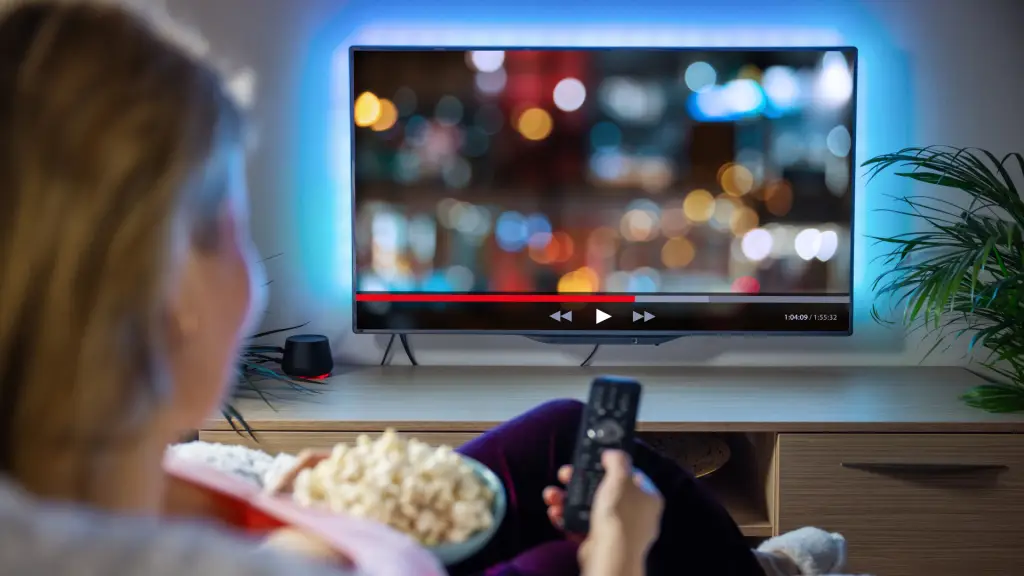Have you ever found yourself constantly adjusting the volume while watching TV—turning it up for dialogue, then down for loud music or sound effects? Do the voices on your favorite shows sound muffled or unclear, even though the volume seems high enough? If so, you’re not alone.
For many adults, especially those over 50, muffled TV sound is a daily frustration. You can hear that someone is speaking, but the words lack sharpness or clarity—like the actors are mumbling or speaking through a wall. This isn’t always due to hearing loss (though that can play a role). In many cases, it’s a combination of modern sound production, speaker quality, room acoustics, and how our ears and brains process sound as we age.
TVs today may be larger and sharper in picture, but their sound systems often leave a lot to be desired. Meanwhile, streaming platforms and broadcast channels mix their audio differently, sometimes prioritizing cinematic effects over clear dialogue. When that’s combined with the natural changes in hearing that occur over time, the result is often a muddled, difficult-to-understand listening experience.
The good news? There are clear, simple fixes that can drastically improve how you hear dialogue on TV—many of which you can try today.
In this article, we’ll break down the real reasons why TV sound is often muffled, how to know whether hearing loss is involved, and what you can do to make speech clearer and your TV time more enjoyable again.
Why TV Dialogue Is So Hard to Hear
If you’ve ever said, “Why can’t they just make the voices clearer?”, you’re not imagining things—TV dialogue is genuinely harder to hear than it used to be. That’s largely due to how modern audio is recorded, mixed, and delivered through today’s television setups.
1. Audio Mixing Favors Effects Over Speech
TV shows and movies today are often produced with cinematic quality in mind. That means dramatic sound effects, immersive background noise, and layered music tracks—great for action and ambiance, but bad news for speech clarity.
Dialogue is usually mixed into the mid to high frequencies, which are the same ranges where music and effects often overlap. This causes auditory masking, where more dominant sounds (like background music or explosions) cover up softer ones—like the crucial consonants in speech.
2. Compressed Audio on Streaming Services
Whether you’re watching through a streaming app, cable box, or satellite dish, the sound is often compressed to save bandwidth. Compression reduces the dynamic range of audio, flattening the contrast between loud and soft sounds.
Unfortunately, this can reduce the subtle details in speech—especially those high-pitched consonants (like “s,” “f,” and “th”) that make words easy to understand. You might hear the voice, but not clearly enough to catch what’s being said.
3. Small, Downward-Facing TV Speakers
Most modern TVs are ultra-thin, and that sleek design comes at a cost: poor speaker placement. Many TVs use small, low-quality speakers that are:
- Located on the back or bottom of the unit
- Pointed away from the viewer
- Not strong enough to reproduce high-frequency sounds clearly
This design makes voices sound dull, echoey, or far away—especially in larger rooms or with background noise present.
4. Inconsistent Volume Across Programs
You may notice that dialogue sounds fine in one show, but awful in another. That’s because there’s no universal standard for audio mixing between networks, streaming services, or production companies.
As a result, you might be constantly adjusting the volume—even within the same program—because:
- Music suddenly gets louder
- Voices drop during quiet or emotional scenes
- Commercials blast compared to regular programming
How Hearing Loss Affects TV Clarity
Even with the best speakers and sound settings, if your ears aren’t picking up certain tones clearly—especially high-frequency sounds—TV dialogue can still sound muffled. This section explains how age-related hearing changes, even when mild, can significantly affect how you experience speech on TV.
1. High-Frequency Hearing Loss Is Common with Age
As we age, the tiny hair cells in our inner ears responsible for detecting high-pitched sounds begin to deteriorate. This condition, known as presbycusis, usually affects frequencies between 2,000 and 8,000 Hz—the exact range that carries many of the consonants critical for speech clarity.
So even if someone is speaking at a normal volume, their words may sound blurry or slurred. You might hear the vowels (“a,” “e,” “o”) just fine, but miss the consonants (“s,” “t,” “f,” “sh”) that help define and separate words. That’s why voices may sound like they’re “blending together” or mumbling.
2. Volume Isn’t the Same as Clarity
Turning up the volume doesn’t necessarily help, and in some cases, it can make things worse by amplifying background noise, music, and sound effects even more. This leads to a frustrating experience where everything is louder—but not clearer.
This is why so many people say things like:
- “I can hear the TV, but I can’t understand what they’re saying.”
- “They sound like they’re talking through a pillow.”
- “I catch some words, but I miss the whole sentence.”
These are classic signs of a clarity issue, not a volume issue—and they’re often tied to high-frequency hearing loss.
3. Even Mild Hearing Loss Makes a Big Difference
You don’t need severe hearing loss to struggle with TV audio. Even a slight dip in your ability to hear certain frequencies can affect how you interpret speech—especially in environments where sound quality is already compromised, like with small TV speakers or noisy rooms.
And because high-frequency hearing loss happens gradually, many people don’t even realize it’s happening until speech on TV becomes consistently frustrating.
4. Cognitive Load and Listening Fatigue
When your ears miss parts of a word or sentence, your brain steps in to “fill in the blanks.” This constant mental effort is called listening fatigue, and it can make watching TV—something that’s supposed to be relaxing—feel draining or stressful.
Other Contributing Factors: Room Setup, Speakers, and Acoustics
Even if your hearing is relatively sharp, your environment can make a big difference in how well you hear TV dialogue. Many homes are unintentionally set up in ways that make speech harder to understand, especially when combined with small TV speakers and open spaces.
1. Speaker Placement Affects Sound Direction
Modern flat-screen TVs often have speakers that face downward or toward the back. This design reflects sound away from your ears, especially if the TV is mounted on a wall or placed in a cabinet. The result? Voices can seem distant, muffled, or echoey.
Also, some rooms are set up with the TV far from where you’re sitting. The farther you are from the source of sound—and the more space between you and the TV—the more chance the sound will bounce off walls and furniture, which reduces clarity.
2. Hard Surfaces Create Echo and Reverb
Sound waves reflect off smooth surfaces like hardwood floors, bare walls, windows, and ceilings. These reflections create reverberation, which can blur speech sounds and make it harder for your brain to distinguish between syllables or speakers.
If your room is full of echo and little to no sound absorption (like carpets, curtains, or padded furniture), even the clearest speech can become muddy.
3. Competing Background Noise
Everyday noise—like ceiling fans, air conditioners, traffic outside, or kitchen appliances—can mask important parts of speech. This is especially problematic for people with mild hearing loss, who may already struggle with signal-to-noise ratio (hearing speech clearly over other sounds).
Even if your room is quiet, distant conversations from other rooms, phones buzzing, or pets moving around can add just enough distraction to affect your ability to follow what’s being said on screen.
4. Suboptimal Audio Settings
Sometimes, the TV’s default audio settings are the culprit. Many televisions emphasize bass or “cinematic” sound profiles that make explosions and music loud but bury speech in the mix. Without proper tuning, your system may be working against you—even if the speakers themselves are high quality.
How to Fix Muffled TV Sound at Home
The good news? You don’t have to keep struggling to understand dialogue on your television. Whether you’re dealing with hearing loss, poor sound design, or an acoustically tricky room, there are practical solutions to improve speech clarity—many of which are simple and affordable.
1. Adjust Your TV’s Audio Settings
Most TVs have built-in audio options that you can fine-tune:
- Enable dialogue or speech enhancement modes (sometimes called “Clear Voice,” “Speech Boost,” or “Night Mode”)
- Use the equalizer (EQ) settings to reduce bass and boost mid and high frequencies—this sharpens consonants and makes words easier to distinguish
- Turn off “Surround Sound” or “Cinema Mode,” which often lowers dialogue volume while boosting effects and ambiance
These tweaks help prioritize the part of the sound spectrum where human speech lives.
2. Use a Soundbar or External Speakers
TV speakers—especially those in slim, wall-mounted units—aren’t designed for great audio. A soundbar or external speaker system can make a massive difference:
- Look for models with dedicated dialogue-enhancing technology
- Position the soundbar directly under the TV and facing the listener
- Some high-end soundbars also offer custom hearing profiles based on your personal needs
You don’t have to spend a fortune—many budget soundbars outperform built-in TV speakers.
3. Try Wireless TV Headsets or Personal Amplifiers
If you need more clarity or a personalized sound boost:
- Wireless TV headsets stream audio directly to your ears, allowing you to control your own volume without bothering others
- Devices like TV Ears or personal amplifiers help isolate speech from other sound layers
- Many of these options include tone control, so you can boost speech frequencies and reduce muddiness
These tools are especially helpful in households with multiple viewers or shared living spaces.
4. Reduce Background Noise
Sometimes it’s not about your ears or equipment—it’s your environment:
- Close windows and doors to block outside noise
- Turn off fans, dishwashers, or loud appliances during TV time
- Use heavy curtains or area rugs to reduce echo
These small changes reduce interference, making dialogue stand out more clearly.
5. Improve Room Acoustics
To minimize echo and reverb:
- Add soft furnishings like carpets, curtains, or cushions
- Use wall panels, bookcases, or tapestries to absorb sound
- Avoid placing the TV in a bare, open space with minimal furniture
Even a few adjustments can turn a hard, echoey room into a more sound-friendly space.
When to See a Hearing Specialist
If you’ve tried adjusting settings, improving your room acoustics, and even adding sound-enhancing devices—but TV dialogue still sounds muffled—it might be time to get your hearing checked. Hearing issues often develop gradually, and many people don’t realize how much their clarity has diminished until everyday activities like watching TV become frustrating.
1. Signs That Hearing Loss May Be Involved
You may benefit from a hearing evaluation if:
- You constantly need to turn up the volume
- Others complain that the TV is too loud, even though you still can’t make out dialogue
- You frequently miss words or need to rewind shows
- You struggle more with TV sound than in-person conversations
- You find watching TV tiring or mentally draining
These are strong indicators that your ears—or your brain’s ability to process sound—need a closer look.
2. What a Hearing Evaluation Involves
A hearing test is quick, painless, and insightful. An audiologist can:
- Measure how well you hear across different frequencies
- Assess your ability to understand speech in both quiet and noisy environments
- Identify whether you have high-frequency hearing loss or another condition affecting clarity
- Recommend solutions like hearing aids, personal amplifiers, or assistive listening devices designed for TV use
You might even find that addressing your hearing needs improves not only your TV experience—but your everyday conversations and confidence as well.
3. How Hearing Aids Can Help with TV Sound
Modern hearing aids are built with features designed specifically for speech clarity:
- Directional microphones that focus on speech
- Bluetooth connectivity to stream audio directly from the TV
- Noise reduction that lowers background distractions
These tools can make watching TV easier, clearer, and more enjoyable—without constantly reaching for the remote.
4. Don’t Wait for It to Get Worse
Many people wait years before seeking help for hearing difficulties, assuming it’s just part of aging or that they can “get by.” But untreated hearing issues can lead to social withdrawal, fatigue, and even cognitive decline.
If muffled TV sound is interfering with your comfort or enjoyment, it’s worth checking out. A hearing specialist can guide you toward the right solution—so you can get back to relaxing and enjoying your favorite shows.
FAQ
Why is TV dialogue so hard to understand even when the volume is loud?
Because volume and clarity are not the same. Many TVs emphasize bass and background effects, which can drown out the mid- and high-frequency sounds where speech clarity lives. If you have even mild hearing loss, this makes voices sound muffled.
What is the best TV setting for clearer speech?
Look for a setting labeled “Speech Enhancement,” “Clear Voice,” or “Dialogue Mode.” If your TV has an equalizer, reduce bass and boost the mid to high frequencies to improve clarity. Turning off “Surround Sound” can also help make voices more distinct.
Do soundbars really help with muffled sound?
Yes. Most built-in TV speakers are small and poorly placed. Soundbars with voice-enhancing features are designed to project clearer, more direct sound toward the listener, making speech significantly easier to understand.
Is trouble hearing the TV a sign of hearing loss?
Not always, but it can be. If you often struggle to follow dialogue even at high volumes or rely heavily on subtitles, it’s a good idea to have your hearing checked—especially if others don’t seem to have the same issue.
Can hearing aids connect to the TV?
Yes. Many modern hearing aids offer Bluetooth or accessory-based streaming, which allows you to hear TV audio directly through your devices. This enhances clarity and makes watching TV more enjoyable without cranking up the volume.
This article is for informational purposes only and is not a substitute for professional medical advice, diagnosis, or treatment. If you are concerned about your hearing or ear health, please consult a qualified healthcare provider.






